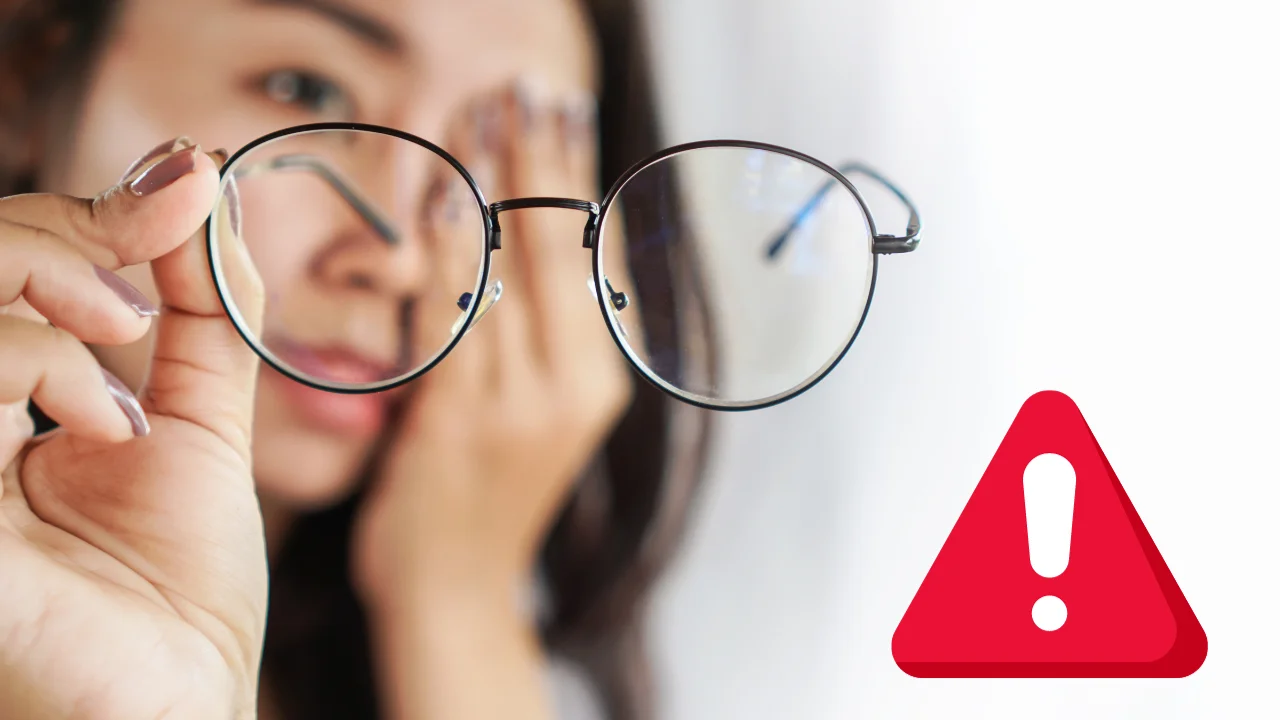Understanding Eyes and Common Eye Problems

As someone who relies on their vision every day, I understand the importance of maintaining good eye health. Our eyes are a vital part of our overall health and well-being, and it’s essential to take care of them to prevent vision problems and other health issues. In this comprehensive guide, I’ll discuss common eye problems and their causes, the importance of regular eye exams, tips for maintaining good eye health, and the benefits of eye exercises for better vision. And Foods to Improve Eye sight.
Table of Contents
Introduction to Eye Health
The eye is a complex organ that allows us to see the world around us. It’s made up of several parts, including the cornea, iris, lens, and retina. Each of these parts plays a crucial role in vision, and any problems with them can lead to vision loss and other health issues.
There are many factors that can affect eye health, including age, genetics, lifestyle, and environmental factors. For example, exposure to UV rays, smoking, and poor nutrition can all contribute to vision problems. It’s essential to take steps to protect your eyes and maintain good eye health throughout your life.
Common Eye Problems and Their Causes
There are several common eye problems that people may experience throughout their lives. These include:
- Myopia (nearsightedness)
- Hyperopia (farsightedness)
- Astigmatism
- Presbyopia
- Cataracts
- Glaucoma
- Age-related macular degeneration
Each of these conditions has its causes and risk factors. Myopia, for example, is often caused by genetics, while age-related macular degeneration is more common in older adults. It’s essential to be aware of the signs and symptoms of these conditions and seek treatment if necessary.
In this part of the article, we will delve into several eye-related issues, including age-related macular degeneration, myopia, conjunctivitis, eye flu, glaucoma, and the role of ophthalmologists in addressing these concerns.
Age Related Macular Degeneration (AMD):
One of the leading causes of vision loss among older adults, age-related macular degeneration (AMD) affects the macula, the central part of the retina responsible for sharp, detailed vision. As individuals age, the macula may deteriorate, leading to blurred or distorted vision. Risk factors for AMD include age, genetics, and lifestyle choices. Regular eye examinations and a healthy lifestyle, including a diet rich in antioxidants, can aid in preventing or managing AMD.
Myopia:
Commonly known as nearsightedness, myopia is a refractive error that hinders the ability to see distant objects clearly. This condition often develops during childhood and may progress with age. Prolonged use of digital devices and limited outdoor activities are contributing factors. Corrective lenses or refractive surgery can effectively address myopia, and early detection is crucial for effective management.
Conjunctivitis:
Conjunctivitis, commonly referred to as pink eye, is the inflammation of the conjunctiva – the thin, transparent layer covering the white part of the eye. This condition can be caused by viruses, bacteria, allergens, or irritants. Symptoms include redness, itching, and excessive tearing. Practicing good hygiene, avoiding eye rubbing, and seeking medical attention for proper diagnosis and treatment are essential in managing conjunctivitis.
Eye Flu:
Eye flu, or viral conjunctivitis, is a contagious infection affecting the eyes. It is often characterized by redness, watery discharge, and discomfort. Proper hand hygiene and avoiding contact with infected individuals can help prevent the spread of eye flu. While symptoms typically resolve on their own, seeking medical advice is crucial to rule out more severe infections and receive appropriate care.
Glaucoma:
Glaucoma is a group of eye conditions that damage the optic nerve, often due to elevated intraocular pressure. This damage can lead to gradual vision loss and, if left untreated, blindness. Regular eye check-ups are crucial for early detection and management of glaucoma. Treatment options include medications, laser therapy, or surgery, depending on the severity of the condition.
The Role of Ophthalmologists:
Ophthalmologists are medical doctors specializing in the diagnosis and treatment of eye diseases and vision disorders. These highly trained professionals play a vital role in preserving and restoring eyesight. Regular eye examinations with an ophthalmologist are crucial for early detection of eye problems, allowing for prompt intervention and personalized treatment plans.
The Importance of Regular Eye Exams
Regular eye exams are a vital part of maintaining good eye health. During an eye exam, an eye doctor will check your vision and look for any signs of eye disease or other health issues. They may also perform tests to determine your risk for certain conditions, such as glaucoma or cataracts.
It’s recommended that adults have a comprehensive eye exam every 1-2 years, depending on their age and risk factors. Children should have their first eye exam at around six months of age, and then again at three years old and before starting school.
Tips for Maintaining Good Eye Health

There are several things you can do to maintain good eye health and reduce your risk of vision problems. These include:
- Eating a healthy diet rich in vitamins and nutrients, such as leafy greens, citrus fruits, and fish
- Quitting smoking or never starting
- Wearing sunglasses to protect your eyes from UV rays
- Taking regular breaks when using a computer or other digital devices
- Using proper lighting when reading or doing close-up work
- Getting enough sleep and managing stress
By incorporating these tips into your daily routine, you can help protect your eyes and maintain good vision throughout your life.
Eye Exercises for Better Vision

In addition to taking steps to maintain good eye health, there are also exercises you can do to improve your vision and reduce eye strain. These exercises can help strengthen the muscles in your eyes and improve focus and coordination. Some examples of eye exercises include:
- Palming:
- Rub your hands together vigorously to generate warmth.
- Cup your palms over your closed eyes without applying pressure.
- Relax and breathe deeply, allowing the warmth to soothe your eyes.
- Practice palming for a few minutes to alleviate eye strain.
- Eye Rolling:
- Sit or stand comfortably.
- Look up and slowly circle your eyes in a clockwise direction for 10-15 seconds.
- Reverse the direction and circle your eyes counterclockwise.
- Repeat this exercise several times.
- Focus Shifting:
- Hold your thumb about 10 inches in front of your face.
- Focus on your thumb for a few seconds, then shift your focus to an object in the distance.
- Alternate between your thumb and the distant object, gradually increasing the time you focus on the distant object.
- Near and Far Focus:
- Hold a small object, like a pen, at arm’s length and focus on it.
- Gradually shift your focus to an object in the distance.
- Repeat this process, alternating between near and far focus, for several repetitions.
- Blinking:
- Blinking helps to moisten the eyes and reduce dryness and irritation.
- Purposefully blink your eyes for a minute to refresh the tear film and reduce eye strain.
- Zooming:
- Sit comfortably and hold your thumb in front of your face.
- Slowly bring your thumb closer to your eyes, focusing on it.
- Move your thumb away while maintaining focus.
- Repeat this process, gradually increasing the speed.
- Figure Eight Eye Movement:
- Imagine a giant figure-eight in front of you.
- Trace the figure-eight pattern with your eyes horizontally and then vertically.
- Perform this exercise in both directions.
- 20-20-20 Rule:
- Follow the 20-20-20 rule to reduce eye strain during prolonged screen time.
- Every 20 minutes, look at something 20 feet away for at least 20 seconds.
- Eye Massage:
- Gently massage your temples in a circular motion using your fingertips.
- Massage the area around your eyes, moving in a circular motion.
- This helps improve blood circulation and reduce tension.
- Convergence Exercises:
- Hold your index finger about 6 inches in front of your face.
- Focus on your finger and slowly move it toward your nose.
- Stop when you see double, and then move it back to the starting position.
- Repeat this process to improve convergence and focus.
These exercises are easy to do and can be done anywhere, making them a convenient way to improve your vision and reduce eye strain.
The Best Food For Eye Health are
A well-balanced diet that includes a variety of nutrients is crucial for maintaining good eye health. Certain vitamins, minerals, and antioxidants are known to contribute to eye health and help prevent age-related macular degeneration (AMD), cataracts, and other vision problems. Here are some of the best foods for promoting eye health:
- Leafy Green Vegetables:
- Foods like spinach, kale, and collard greens are rich in lutein and zeaxanthin, antioxidants that are beneficial for the eyes. They may help protect the eyes from harmful high-energy light waves like ultraviolet rays.
- Fish:
- Fatty fish such as salmon, trout, and tuna are excellent sources of omega-3 fatty acids. These essential fatty acids are crucial for maintaining the structural integrity of the eye’s retina.
- Citrus Fruits and Berries:
- Citrus fruits like oranges and berries such as strawberries and blueberries are high in vitamin C. Vitamin C is an antioxidant that may help prevent cataracts and support overall eye health.
- Nuts and Seeds:
- Almonds, walnuts, and sunflower seeds are rich in vitamin E, which has been associated with a reduced risk of developing cataracts and AMD.
- Carrots:
- Carrots are well-known for their high beta-carotene content, which is converted into vitamin A in the body. Vitamin A is essential for maintaining the health of the cornea and may help prevent night blindness.
- Sweet Potatoes:
- Like carrots, sweet potatoes are rich in beta-carotene and contribute to the production of vitamin A, promoting overall eye health.
- Eggs:
- Eggs contain lutein, zeaxanthin, and zinc, which are important for maintaining the health of the retina. They also contain vitamin E and omega-3 fatty acids.
- Broccoli:
- Broccoli is a good source of lutein and zeaxanthin. It also provides vitamin C and beta-carotene, contributing to eye health.
- Bell Peppers:
- Bell peppers, especially the brightly colored ones, are rich in vitamin C. This antioxidant helps maintain the health of blood vessels in the eyes.
- Whole Grains:
- Foods like quinoa, brown rice, and whole wheat bread provide vitamin E, zinc, and niacin, which contribute to overall eye health.
- Oysters:
- Oysters are an excellent source of zinc, a mineral that is essential for maintaining the health of the retina. Zinc is also present in other seafood, meat, and dairy products.
- Dark Chocolate:
- Dark chocolate contains flavonoids, which have antioxidant properties and may improve blood flow to the eyes. Choose chocolate with at least 70% cocoa content for maximum benefits.
In addition to including these eye-healthy foods in your diet, it’s essential to maintain a healthy lifestyle, stay hydrated, and protect your eyes from excessive sun exposure. If you have specific concerns about your eye health or diet, it’s recommended to consult with a healthcare professional or a registered dietitian for personalized advice.
Read More Articles on Health From our Health Section : Lets Go
- 10 Best Ways Avoid Back pain. Causes, Treatment , And Poses For Back pain Relief
- How Over Exercising can lead to Heart Attack! 6 Ways to Avoid Heart Attack during Exercise.
- 10 Proven and Effective Ways To Reduce Stress
- 20 ways, How Yoga can Improve your Heart Function; Exercises and Poses for 9 to 5 People
- 3 Proven Ways to Get Out of Anxiety: A Simple Guide for Better Life






